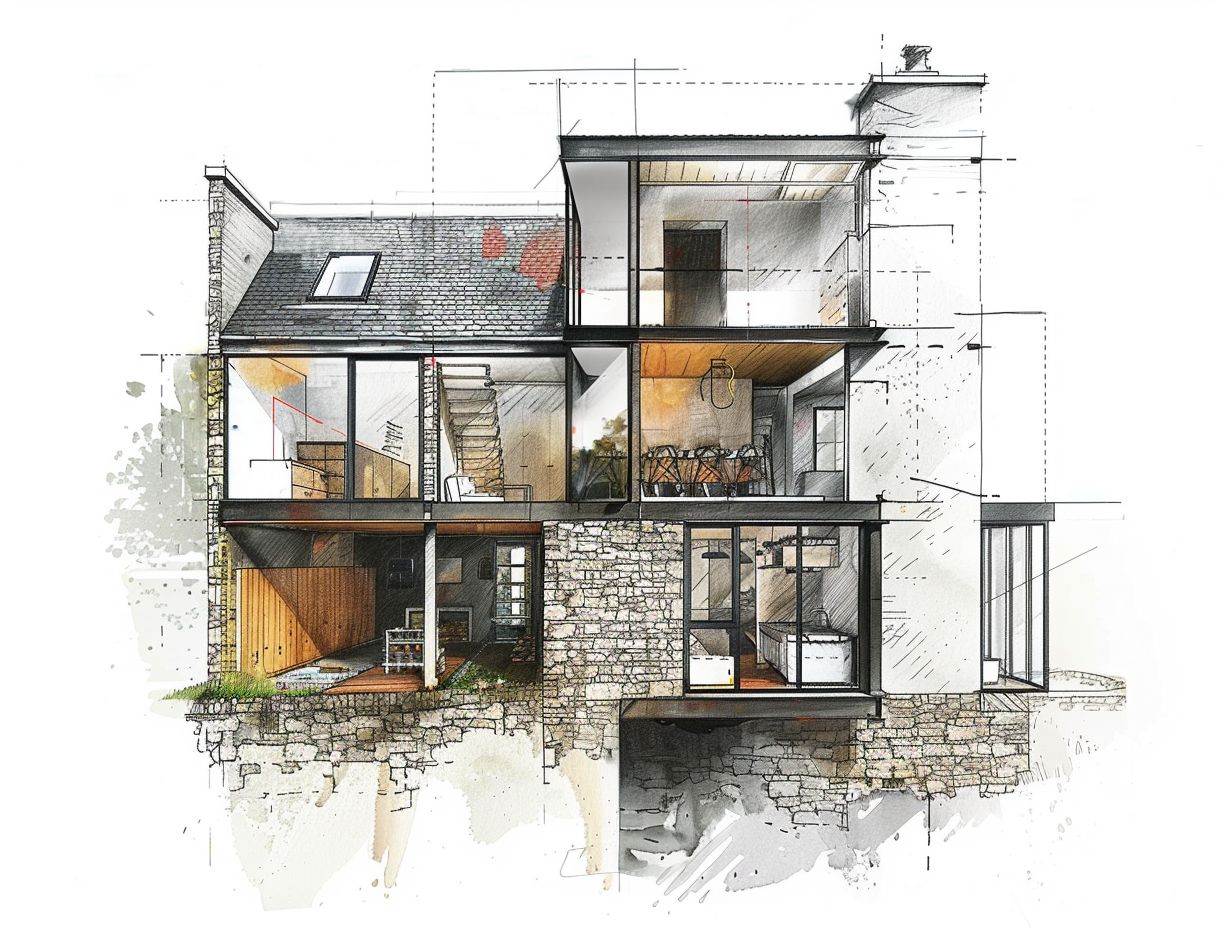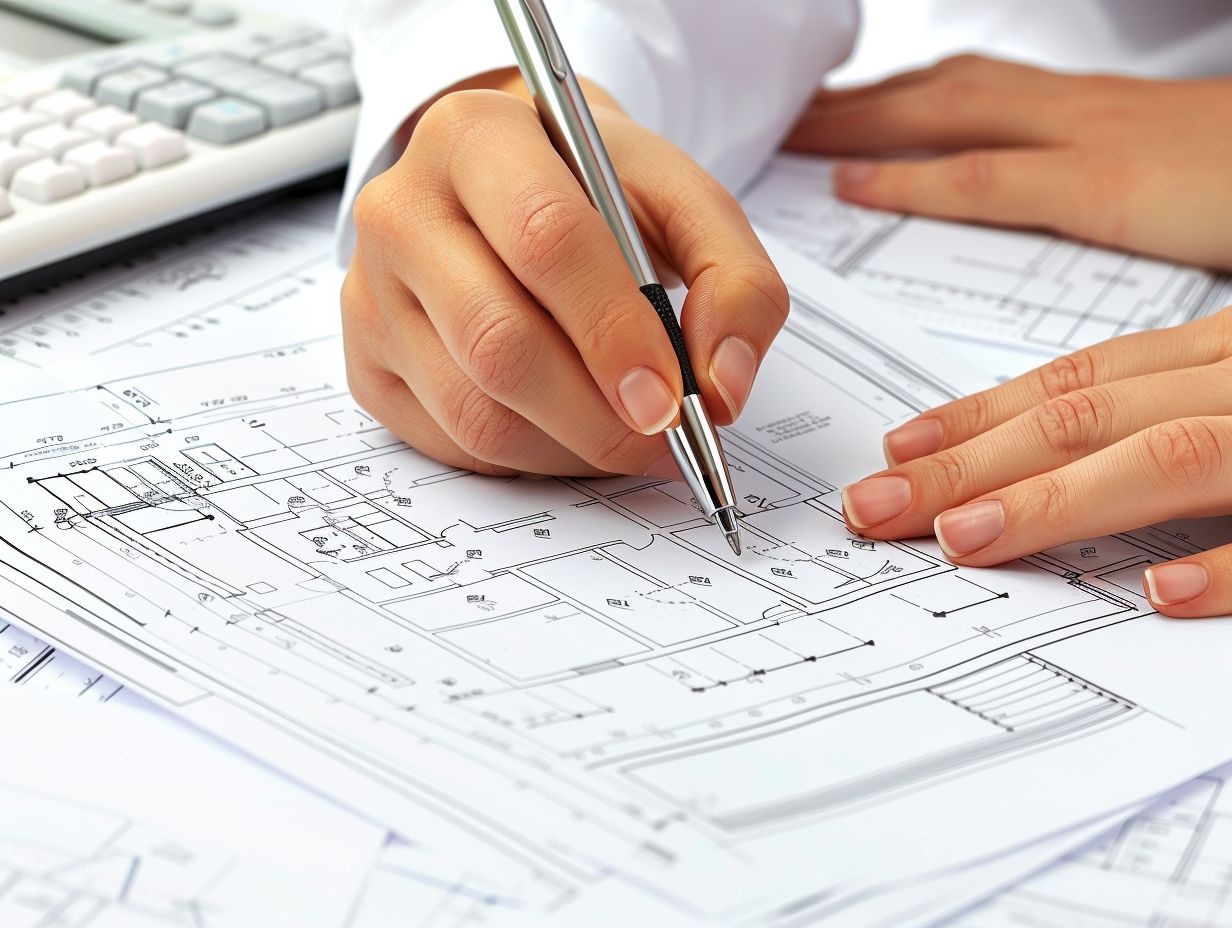
Insider Advice Choosing The Right Architectural Drawings For Your Home Extension
Embarking on a home extension project while grappling with the complexities of architectural drawings can be daunting. Look no further than this informative resource for guidance.
This comprehensive guide meticulously delineates the various types of drawings and their respective purposes, elucidates crucial considerations for selecting appropriate plans, and furnishes valuable insights on fostering productive collaboration with an architect.
Additionally, it elucidates prevalent errors to steer clear of and proffers recommendations for finalizing and executing chosen drawings. Avail yourself of this expert counsel to ensure the success of your home extension endeavor.
Understanding Architectural Drawings
A comprehensive grasp of architectural drawings is imperative for the successful execution of any construction or renovation endeavor. These drawings play a pivotal role as the visual manifestation of the architect’s conceptualization and intended scheme for the edifice. They encompass intricate blueprints, layouts, and site arrangements that illustrate the precise dimensions, spatial organization, and overarching aesthetic of the project. Employing sophisticated visualization methods such as 3D rendering enables clients and construction personnel to attain a profound comprehension of the anticipated appearance and functionality of the eventual structure.
Types of Drawings and Their Purposes
Architectural drawings comprise various types that fulfill distinct functions within the design and construction processes. Floor plans delineate the spatial arrangement of rooms and areas within the structure, while exterior design drawings concentrate on the aesthetics and architectural characteristics of the edifice. Building specifications drawings delineate the materials, dimensions, and technical particulars crucial for construction.
Floor plans play a pivotal role in illustrating the relationships between various spaces, such as the placement of walls, doorways, and windows, enabling architects and builders to visualize and plan spatial configurations effectively. Conversely, exterior design drawings accentuate the architectural style of the structure, displaying elements like facades, roofs, and exterior embellishments. Building specifications drawings are essential as they furnish precise directives on the type of materials to be utilized, their quality specifications, dimensions, and installation procedures to ensure that the construction adheres to the design requirements.
Factors to Consider When Choosing Architectural Drawings
The process of choosing suitable architectural drawings for a project necessitates the consideration of several factors, including:
- budget constraints,
- time limitations,
- conformity to local building regulations, and
- alignment with individual design preferences.
It is imperative that these drawings not only embody the desired aesthetic and functionality but also adhere to zoning ordinances, building codes, and structural integrity standards.
Budget and Time Constraints
When selecting architectural drawings, it is imperative to consider the project’s budget and time constraints. Conducting a thorough cost estimate and establishing a realistic timeframe are essential steps in assessing the feasibility of the design plans within the allocated resources and project scope.
Aligning the proposed architectural drawings with the available resources and desired project timeline enables project managers to ensure that the design plans are not only visually appealing but also financially viable. Striking a balance between creativity and practicality is essential for making well-informed decisions that fulfill artistic aspirations while respecting financial limitations. As such, architects must meticulously evaluate the financial implications and time commitments associated with each design choice to secure a successful outcome that satisfies all project stakeholders.
Local Building Regulations
Adherence to local building regulations stands as a critical consideration when selecting architectural drawings for a construction or renovation endeavor. The acquisition of requisite building permits, adherence to zoning laws, and fulfillment of building codes constitute essential steps within the permitting process aimed at ensuring both legal and structural compliance.
Local building regulations assume a pivotal role in defining the parameters under which construction projects operate. By taking into account these regulations, individuals can adeptly navigate the intricate permitting process. Building permits serve not only to formalize the construction process but also to guarantee conformance with safety standards and environmental directives. Zoning laws delineate the permissible uses of land, influencing the nature and size of constructions that can be undertaken. Compliance with building codes serves to protect the structural soundness of the construction, assuring its safety for occupants.
A comprehensive understanding and strict adherence to these regulations are fundamental elements underpinning the realization of a successful and legally sound construction project.
Personal Design Preferences
Personal design preferences play a crucial role in the selection of architectural drawings. Whether one is prioritizing interior design elements, aesthetic appeal, functional layout, or customization options, aligning the design plans with one’s stylistic preferences is imperative for achieving a space that reflects the envisioned outcome and meets the requirements of one’s lifestyle.
By conscientiously considering one’s distinctive style preferences, one can ensure that every facet of the architectural drawings resonates with their personality and tastes, thereby fostering a cohesive and harmonious living or working environment. From selecting color schemes that evoke specific emotions to choosing furniture that caters to individual needs and complements the space, the significance of individual design choices cannot be underestimated. The process of customizing architectural drawings to mirror one’s preferences allows for the creation of a truly personalized space that not only boasts aesthetic appeal but also operates seamlessly to support one’s daily routines.
Working with an Architect
Engaging in a collaborative partnership with an architect entails a meticulous process that revolves around consultations, comprehending the requirements of the client, and cultivating innovation and creativity in the realm of design. Architects leverage their knowledge, expertise, and creative acumen to work in tandem with clients, effectively transforming their conceptualization into tangible and visually appealing architectural schematics.
Collaborating on Drawings and Plans
The collaborative process of working with an architect on architectural drawings and plans entails aligning design concepts with client needs and style preferences. By employing effective visualization techniques and maintaining open communication, architects closely collaborate with clients to develop tailored designs that integrate functionality and aesthetic appeal.
This collaborative approach is crucial in ensuring that the architectural design not only fulfills the client’s specifications but also mirrors their distinctive taste and vision. By attentively listening to clients and comprehending their lifestyle and preferences, architects can craft spaces that accurately capture their personality and desired functionality.
The utilization of advanced visualization tools, such as 3D modeling and virtual reality, can significantly facilitate the presentation of design concepts to clients, allowing them to envision the final outcome and make well-informed decisions. Clear and consistent communication throughout the design process is essential for refining the plans to seamlessly align with the client’s expectations and materialize their envisioned space.
Common Mistakes to Avoid
It is imperative to avoid common errors in architectural drawings to ensure the success of construction or renovation projects. Failure to address structural considerations may result in expensive rework and compromises on the integrity of the building. Likewise, overlooking future needs could lead to designs that rapidly become obsolete or are unable to meet evolving requirements.
Overlooking Structural Considerations
One common error to evade in architectural drawings is the oversight of structural considerations. Ensuring engagement with a structural engineer early in the design process guarantees that the building specifications prioritize structural integrity, material selection, and construction methods that uphold the safety and stability of the structure.
Incorporating a structural engineer from the project’s inception avails architects of expertise in evaluating loads, stresses, and potential weak points in the design. These professionals play a pivotal role in recommending appropriate materials that align with the intended design while meeting safety standards. The structural engineer verifies that the building adheres to regulations and codes, thereby reducing the risk of structural failures and costly revisions during construction.
Collaboration between architects and structural engineers ultimately culminates in the development of aesthetically pleasing yet structurally sound buildings that endure the passage of time.
Not Considering Future Needs
Failure to account for future needs in architectural drawings can have a significant impact on the long-term functionality and value of the structure. By prioritizing aspects such as space utilization, client satisfaction, sustainability, and energy efficiency during the design phase, architectural plans can be tailored to not only meet present requirements but also adapt to future trends and demands.
Strategic architectural planning necessitates the foresight to anticipate shifts in technology, demographics, and environmental regulations in order to create spaces that will endure as relevant and efficient over time. By integrating flexible design elements and sustainable materials into the framework of the building, architects can future-proof the structure, mitigating the necessity for costly renovations or alterations in the future. This proactive strategy not only enhances the building’s durability but also contributes to fostering a more sustainable and resilient built environment.
Finalizing and Implementing Your Chosen Drawings
The completion and implementation of selected architectural drawings represent major milestones within the construction or renovation process. It is imperative to obtain the required building permits and approvals prior to proceeding with the engagement of a contractor and commencing the project management phase. This is essential in guaranteeing a smooth and efficient execution of the design plans.
Obtaining Necessary Permits and Approvals
The acquisition of necessary permits and approvals for architectural drawings represents a critical phase in the construction process. Adherence to building codes and regulations, in conjunction with robust quality assurance measures, is paramount in ensuring the seamless progression of the project within the stipulated construction timeline.
The procurement of permits and approvals for architectural drawings holds significant importance, serving as a demonstration of commitment to the legal prerequisites established by regulatory bodies. Through meticulous observance of building codes, the construction team can affirm that the structure adheres to safety and quality benchmarks. Construction in alignment with stipulated guidelines not only guarantees the durability and longevity of the completed structure but also instills confidence in the legality of the project.
A well-defined construction timeline plays a pivotal role in orchestrating diverse activities, facilitating efficient project management and timely project completion. Every facet of compliance and meticulous planning contributes substantively to the realization of a successful construction endeavor.
Hiring a Contractor and Managing the Project
The employment of a skilled contractor and the proficient management of a project based on architectural drawings are fundamental components for the successful completion of a project. Coordinating construction activities, overseeing the selection of materials, and ensuring the availability of qualified labor are critical elements of effective project management.
In the process of engaging a dependable contractor, it is imperative to establish clear lines of communication to facilitate the smooth progress of the project. Effective project management practices encompass not only meticulous planning but also the ability to adapt to unforeseen circumstances that may arise during the construction phase. The management of material procurement necessitates a keen focus on detail and timeliness to mitigate potential delays. Supervising the work of skilled labor entails monitoring their craftsmanship to ensure adherence to the architectural design plans with precision.
By implementing these strategies, projects can be delivered in a timely manner and within the allocated budget, thereby meeting the expectations of the client.




No Comments